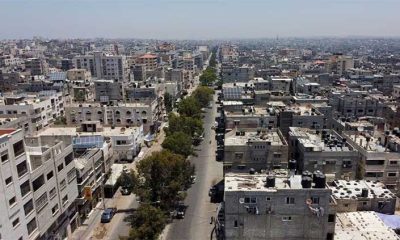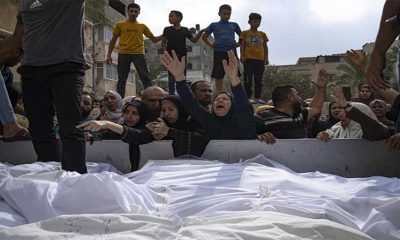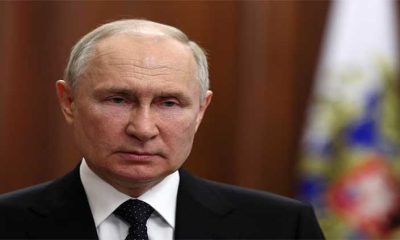Marco Gonzales ventured to the Andean city of Cusco from his home in the Peruvian Amazon in 2007 with little more than $20, a smidgeon of English and a change of clothes poorly suited for the icy mountain air.
He started offering walking tours of the former Incan Empire capital in exchange for tips. Along the way he fell in love with a British backpacker, Nathalie Zulauf, and together the couple built a travel business and family.
But now it’s all at risk of collapsing along with so much of Peru’s once-enviable economic stability.
The couple’s company, Bloody Bueno Peru, which caters to mostly foreign tourists from Britain and elsewhere, hasn’t seen a customer since December, when protesters demanding the resignation of interim President Dina Boluarte all but cut off access to the ancient ruins of Machu Picchu. Groups have canceled reservations months in advance, forcing the couple to dip into savings already depleted by the coronavirus pandemic.
“We’re waiting until March to see if the situation improves,” said Gonzales, 38, staring at a calendar he no longer bothers to update. “If it doesn’t we’ll have to explore other options, like shutting down the business and emigrating. At least in England we have Nathalie’s family.”
Others in Cusco have far less to fall back on.
The city of 450,000, normally a polyglot mecca of foreign travelers, is a ghost town these days. The Plaza de Armas, where women dressed in colorful Andean textiles used to pose for snapshots, now attracts demonstrators playing cat-and-mouse with heavily armored riot police.
Political turmoil is nothing new in Peru, which has seen six presidents in the last five years. In 1969, with a military dictatorship in power, Nobel Prize-winning author Mario Vargas Llosa posed this now iconic question to start his novel “Conversations in the Cathedral”: “At what precise moment did Peru screw itself?”
For a long time, the dysfunction was held in check and didn’t interfere with sacred cornerstones of the free-market economy like the key mining industry. Since 2000, Peru’s economy grew at an average annual rate of 4.4% — more than any country in South America —with low inflation and a stable currency. Until the pandemic hit, poverty had fallen by half.
But the scale of violence following President Pedro Castillo’s Dec. 7 impeachment and arrest for a clumsy effort to shutter Congress — unrest that has left 57 civilians dead and hundreds more injured — has revived class and racial divisions and has many Peruvians wondering whether the long period of uneasy stability has run its course.
“This dichotomy couldn’t last,” said Steven Levitsky, a Harvard University political scientist and co-author of the 2018 book, “ How Democracies Die.”
Signs of the economic fallout are everywhere.
In December — as the political crisis got underway — the number of foreigners arriving in Peru had already fallen to the lowest level since 2009, aside from the two years lost to COVID-19. Activity at three major copper and tin mines had been suspended because highways were blocked or their facilities attacked by protesters.
Peru is the world’s largest exporter of grapes and the protests hit during the height of harvest. Shipments in one major growing area are barely 4% of a year ago, according to Darío Núñez, whose company, Uvica, has been unable to fulfill orders by U.S. retailers such as Costco and Sam’s Club.
“The credibility of Peru as a brand is starting to suffer,” said Núñez. “I don’t see a light at the end of the tunnel.”
Peru’s democratic dysfunction, years in the making, accelerated with Castillo’s surprise election in 2021. A rural schoolteacher, he rose from obscurity to fill a void left by a broken political system, widespread graft and deep-seated racism.
His journey from an adobe home in one of Peru’s poorest areas to the presidential palace was fueled by fury in the long-neglected Andean highlands. But once in office, he shuffled his Cabinet almost weekly and was beset by corruption allegations that underscored his inexperience.
Elites in Congress, although even more discredited than Castillo, went on the offensive, using an obscure constitutional power to seek his impeachment for “moral incapacity.” This triggered Castillo’s move to shut down Congress, which backfired with his arrest on charges of rebellion — and vice president Boluarte’s ascension to power.
The current revolt has coalesced around an urgent demand: Boluarte’s departure. Congress could act by ordering early elections but has so far refused as lawmakers are reluctant to, in effect, fire themselves.
Levitsky, the Harvard professor, said it’s too early to know how Peru’s crisis will unfold. One demand from protesters is that the constitution adopted during Alberto Fujimori’s 1990-2000 authoritarian rule and which strengthened free-market reforms be overhauled.
But whatever happens, Levitsky doesn’t see a return to the status quo.
“A state that doesn’t work is sooner or later going to fall into crisis,” he said. “They had 20 years to build a state and they failed miserably.”
Monuments to that failure are everywhere in Cusco: An unfinished highway that was supposed to bisect the city and the crumbling façade of the Hotel Cusco, a historic landmark owned by the city government.
But perhaps the biggest white elephant is the Hospital Antonio Lorena.
Rising above the city’s red tile roofs, the sleek glass-and-steel structure was supposed to be the most modern in southern Peru when construction began in 2012. But after three years, the Brazilian builder abandoned the project amid an investigation into cost overruns fueled by alleged bribes paid to Cusco’s governor and the wife of Peru’s then-president Ollanta Humala.
Today, the half-built skeleton is covered by graffiti amid peeling paint, exposed power cables and shattered glass. On Dec. 7 — the day Castillo was arrested — a ribbon-cutting ceremony was held to mark the start of a 730-day, $244 million rescue plan for the project by a new foreign consortium with technical assistance from France.
Jorge Zapata, the head of Peru’s construction lobby, blames greedy politicians for the standstill. Nationwide, over 2,500 state-funded infrastructure projects worth $7 billion are paralyzed due to mismanagement, he said.
Meanwhile, instead of guiding tourists, Gonzales now spends his days scouring Cusco for a propane gas cannister to cook and bathe the couple’s 5-month-old daughter, Willow.
At an industrial depot, dozens of desperate residents were lined up this week in hopes demonstrators blocking the highways would halt their pickets long enough to let the trucks delivering the propane reach the besieged city.
“This is really scary,” said Zula uf, as she bounced her baby on her knees staring at the long line from her car. “In Cusco, people live day-to-day. If they can’t work, I don’t know how they’re surviving.”
Among those in line was Fredy Deza, who spent the night in a sleeping bag on the sidewalk.
Deza, 40, said the all-night vigil recalled another dark period in Peru’s history, when he would wait with his mother in long lines for bread, sugar and other staples during the chaotic 1985-1990 presidency of Alan Garcia.
“It’s like we’re going back in time,” said Deza, who worked as a guide in Machu Picchu until he was let go in December.
Prices for propane and other scarce items in Cusco are soaring due to inflation that jumped to 8.7% in January, near the highest level in a quarter-century. A black market has emerged, with cannisters going for three times the listed price.
Adding to insult, the cooking gas many can no longer afford is pumped by a foreign-owned consortium from the resource-rich department of Cusco and transported by a pipeline to the capital, Lima, where the bulk is then exported. A projected second pipeline, which would deliver it to Cusco and other cities in the south, remains a pipe dream.
“It’s sad,” said Deza, as he prepared for another cold night, “that as owners of our gas we have to be enduring this.”
Post Views: 71


 Fashion3 months ago
Fashion3 months ago
 Sports3 months ago
Sports3 months ago
 Sports3 months ago
Sports3 months ago
 Fashion2 months ago
Fashion2 months ago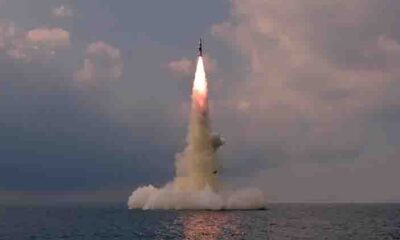
 World3 months ago
World3 months ago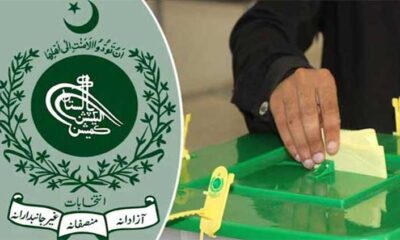
 pakistan3 months ago
pakistan3 months ago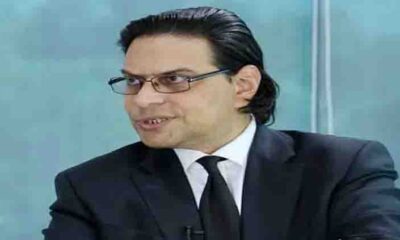
 pakistan3 months ago
pakistan3 months ago
 Tech3 months ago
Tech3 months ago
